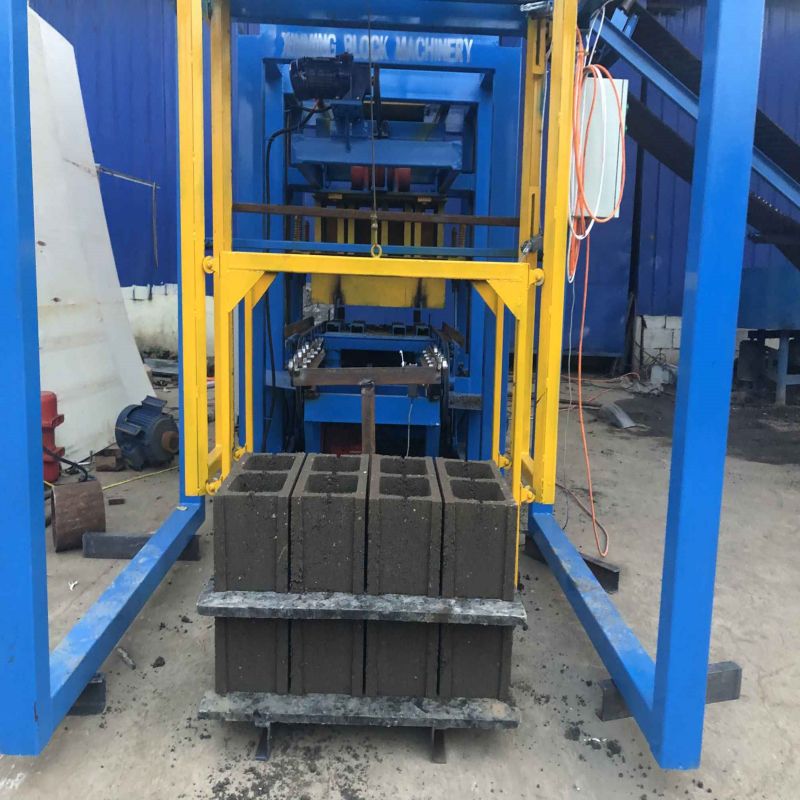
Image source:Aiweiblockmachine
Introduction
The construction industry in South Africa is undergoing a transformative shift, with a growing emphasis on sustainability and environmentally friendly practices. As a critical component of construction, the brick production sector is no exception. In this article, we delve into the realm of sustainable practices in brick production using machines in South Africa. We explore how technology, innovation, and a commitment to eco-consciousness are reshaping the way bricks are manufactured, reducing environmental impact, and contributing to a greener construction future.
1. The Environmental Imperative: Navigating Sustainability Challenges
The brick production industry has historically faced environmental challenges due to resource consumption, waste generation, and carbon emissions. Traditional brick firing methods, such as coal-fired kilns, contribute to air pollution and greenhouse gas emissions. As the world focuses on mitigating climate change and reducing carbon footprints, the brick production sector has taken up the challenge of reimagining its practices.
2. Alternative Raw Materials: A Sustainable Shift
Overview: One of the pivotal steps toward sustainability in brick production involves reevaluating the raw materials used in the process.
Stabilized Soil and Fly Ash: Modern brick making machines in South Africa have enabled the integration of alternative materials such as stabilized soil and fly ash, which reduce the reliance on traditional clay.
Benefits: These alternatives not only reduce the demand for clay resources but also enhance the insulation properties of bricks, resulting in energy-efficient buildings. Moreover, incorporating fly ash, a byproduct of coal combustion, diverts waste from landfills and repurposes it for constructive use.
3. Interlocking Brick Technology: Building Blocks of Sustainability
Innovative Design: Interlocking brick technology has emerged as a revolutionary approach to sustainable brick production. The design of these bricks includes grooves and protrusions that allow them to fit together without the need for mortar.
Sustainability Benefits: Interlocking bricks significantly reduce the consumption of cement, a major contributor to carbon emissions. The elimination of mortar also reduces water usage during construction, further enhancing sustainability.
4. Energy-Efficient Kilns: Paving the Way for Cleaner Firing
Solar-Powered Kilns: Energy-efficient kilns, powered by renewable solar energy, have gained traction in South Africa’s brick production landscape.
Working Principle: These kilns harness the abundant sunlight in the country, converting it into clean energy for firing bricks. The result is a drastic reduction in greenhouse gas emissions and a significant decrease in reliance on fossil fuels.
Benefits: Solar-powered kilns align with the country’s commitment to renewable energy and sustainable practices. They serve as a model for reducing the carbon footprint associated with brick production.
5. Reduced Wastage: Minimizing Environmental Impact
Precise Mixing and Molding: Modern brick making machines offer precise control over raw material mixing and molding processes, reducing wastage.
Benefits: Controlled processes result in minimal material wastage, contributing to efficient resource utilization. This not only reduces costs for manufacturers but also minimizes the environmental impact associated with raw material extraction and processing.
6. Eco-Friendly Design and Use: Enhancing Sustainable Construction
Aesthetic and Functional Bricks: Sustainable brick production also extends to the design and function of bricks themselves.
Decorative and Insulating Bricks: Some brick making machines enable the production of decorative and insulating bricks, contributing to energy-efficient building designs.
Benefits: Decorative bricks allow architects to create unique and visually appealing structures, while insulating bricks improve thermal efficiency, reducing the need for heating and cooling in buildings.
7. Circular Economy Approach: Closing the Loop
Waste Reuse: Sustainable brick production can embrace a circular economy approach by repurposing waste materials.
Recycling Rejected Bricks: Rejected or damaged bricks can be crushed and reused as aggregate for other construction materials, closing the loop and reducing waste.
Benefits: This approach not only minimizes waste sent to landfills but also reduces the demand for virgin materials, contributing to a more sustainable construction ecosystem.
Conclusion
As South Africa’s construction industry charts a path toward sustainability, the brick production sector is playing a pivotal role in driving positive change. Through the integration of alternative materials, interlocking brick technology, energy-efficient kilns, reduced wastage, and eco-friendly designs, sustainable practices are becoming a hallmark of brick production using machines in South Africa. These practices not only minimize the environmental impact associated with brick manufacturing but also contribute to energy-efficient buildings and a more responsible construction industry. As the nation embraces these practices, it paves the way for a greener, more resilient, and eco-conscious built environment.
